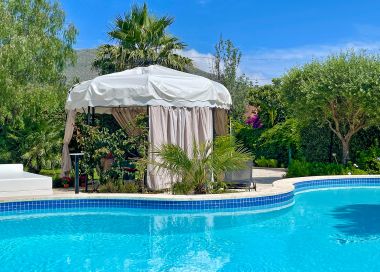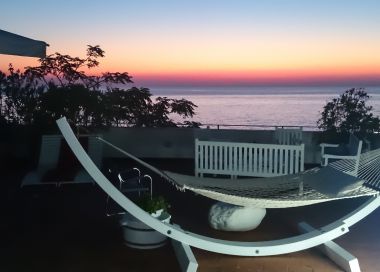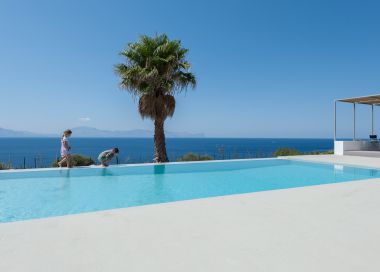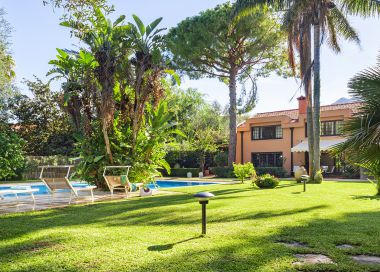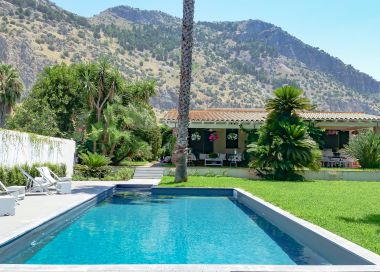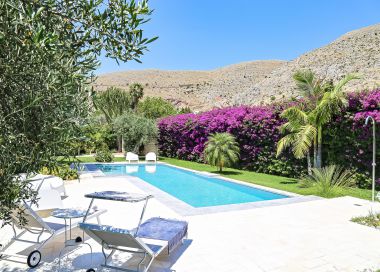Palermo
Palermo, the most arabic city in Europe
Palermo, the quintessence of Sicily, is capable of being chaotic, elegant, fascinating, secretive and a little decadant, all at the same time. The main centre on the island since the 9th Century B.C., its current appearance derives mainly from its past rich in foreign influences and dominations and demonstrates the typical Sicilian fusion of art, architecture and way of life on which the past invaders have left their impression. In the small streets and alleys of its huge historic centre elegant Baroque and Norman monuments stand side-by-side with arabic domes, the Byzantine street markets of the "Ballaro", "Vucciria" and "Capo" invade the populated medieval quarters of the city and some of the most important Italian brands can be found on the elegant Via Libertà in the city centre. Palermo has undergone a number of changes during the past thirty years. First its suburbs were "assaulted" by a mass of concrete and subsequently the city has been "salvaged" in various stages from the embarassing state of degradation in which it was left for some time after the end of the second world war. The city's slow and laborious restoration locked horns with the various layers of bureaucracy in the government, with speculation and with negligence resulting in a city that has two sides: its fascinating and undisputed architectural treasures set against its poor standards of maintenance and crumbling services. Despite this fact, its fascination is unquestioned and there is not a corner of the historic centre of the city that will not provide you with a pleasant surprise: alleys, markets, squares that provide you with an opportunity to admire the city's architectural treasures, some of which are stiil in a state of disrepair, and to sample the real essence of the city, its inhabitants and their Byzantine and Arabic origins which continue to flourish today in the gestures and voices of the stall holders in the colourful and picturesque street markets where they sell everything from fresh fish to clothes, spices to typical local dishes cooked and eaten on the street. An experience for all the senses. A visit to the city's numerous and famous monuments, churches, squares, cathedrals, villas and aristocratic residences is an absolute must. In particular we recommend the Cathedral, the Palazzo Reale, the Cappella Palatina, the Martorana, San Giovanni degli Eremiti, the Spasimo church in the Kalsa district (the oldest district in Palermo), the church of Santa Maria della Catena, Casa Professa, the Chiesa della Magione, the Chiesa della Gancia, Palazzo Aiutamicristo, Steri, Abatellis, Chiaramonte, the Palazzina Cinese and Villa Giulia, the 19th century Botanical Garden, the Giardino Inglese, the Parco d'Orleans, the Villa Malfitano Whitaker and the city's famous squares such as Piazza Marina, Piazza delle Vergogna, the Quattro Canti, Piazza Magione, Piazza Indipendenza and Piazza Politeama. All need to be visited with care and attention, however, we recommend that you go looking for some of the less tourist-orientated sights by consulting a good alternative guide book which should also help you to discover the gastronomic traditions of the city which contain surprises of their own. You should try to penetrate on foot the small, hidden alleys of the historic centre or ask one of the carriage drivers to take you on a tour of less tourist-orientated parts of the city. If you still have time, it is well worth visiting some of the sights near the city and in particular we recommend Monreale with its Benedictine Cloisters, one of the finest examples of Arab-Norman architecture in Sicily, and Mondello where examples of some of Sicily's finest art-deco villas can be found.



















